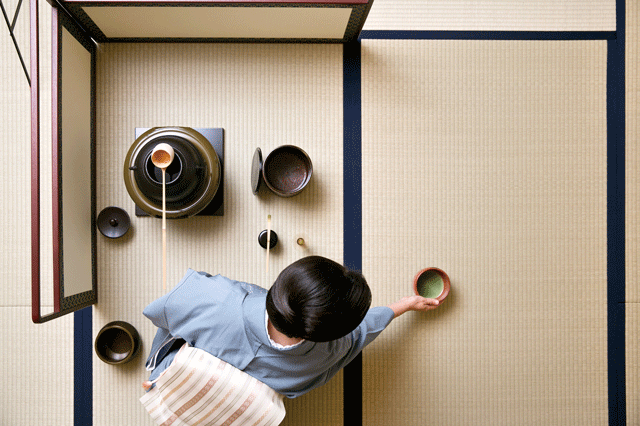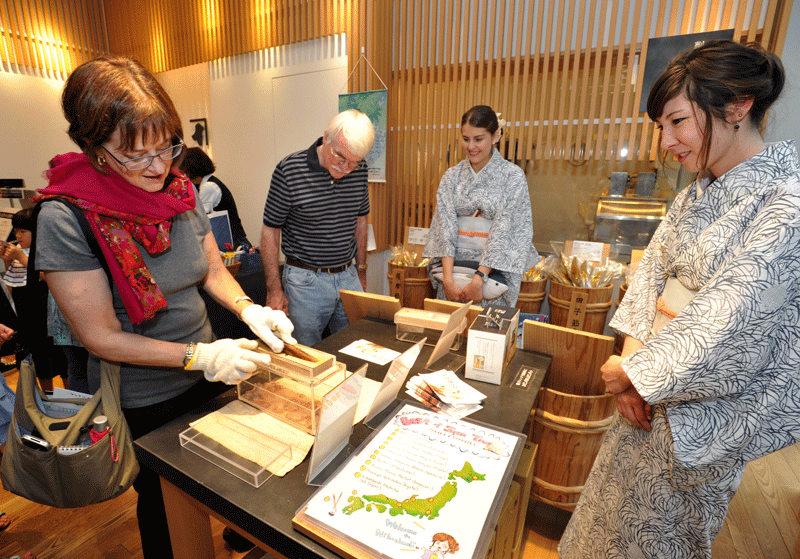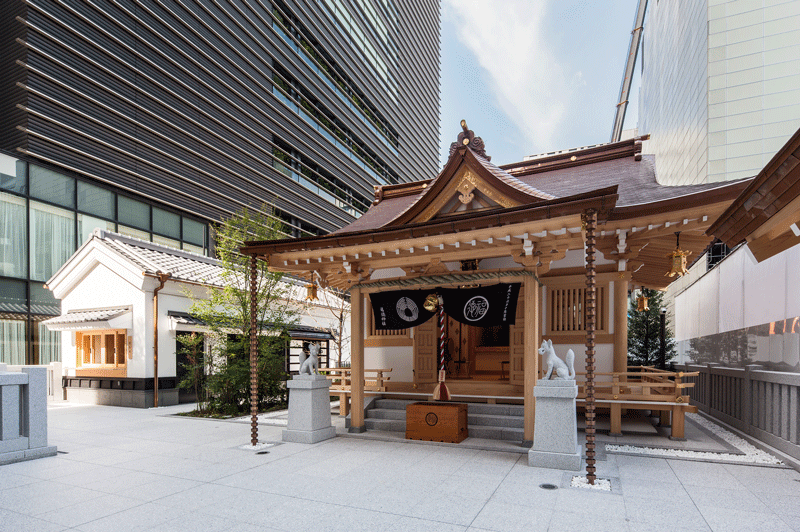Step into the many departments of Japanese history and culture in Nihonbashi, the former center of Edo period commerce.
One of the best parts of taking a trip around Japan is taking in the local crafts and delicacies from the country’s many geographical regions, and in some cases, seeing how they are made. For example, a visit to Kochi Prefecture in Shikoku would allow you to drop in at Imoya Kinjiro’s headquarters, where the company’s celebrated imo kenpi (sweet potato snacks) are made. Or you could visit one of the centers for the production of delicate gold leaf in Ishikawa, where the precious metal is hammered into sheets that are several hundreds of times thinner than a piece of paper.
Now imagine being able to experience a wide variety of these traditional crafts and dishes without needing to leave Tokyo itself. The Nihonbashi Information Center at the COREDO Muromachi shopping area makes this dream a reality. On their “Best of Japan Gourmet Tour,” participants can sample the many different products from around Japan, and find out more about the traditions that have brought them to life.
During the Edo period, the shitamachi (downtown) neighborhood of Nihonbashi was a major merchant center of Tokyo, where goods both local to the Kanto area, and farther afield, could all be found under one roof. Today, the shops at COREDO make for an ideal spot for participants to take this hour and a half tour that visits ten different shops that specialize in ten regional specialties. You’ll be able to run the length and the breadth of Japan, from an introduction to Hokkaido’s celebrated oysters in the north to the traditionally prepared satsuma age (fried fish cakes) of Kagoshima to the south. Participants can learn the history behind these products, and at many of the stores, try out samples and even some hands-on experiences.
The tours are led by the Nihonbashi Information Center’s English speaking concierges, who make it possible for tour participants to combine their Japanese exploration with clear, extensive explanations. (Guidance in other languages may also be arranged with advance notice.)
Culture Experience Tour
Founded, as some historians say, as early back as the ninth century, the Fukutoku Shrine is one of the oldest shrines in the city. However, during Tokyo’s post-war construction boom, the shrine was relocated several times finally languishing atop an office building for decades. Rebuilt in a spacious courtyard next to the COREDO complex, it stands as a stunning example of more than a thousand years of history and tradition. Fukutoku is the starting place for the Nihonbashi Information Center’s “Culture Experience Tour,” which introduces participants to the rich spiritual, artisanal, and culinary traditions of the area. After a visit to the shrine, participants are guided through COREDO’s traditional shops, featuring items such as lacquerware and chopsticks. A free origami workshop is available at the end of the tour.
Omotenashi Experience
Perhaps the best way to truly understand an aspect of Japanese culture is to really dig in and try it out yourself. The company Shinnichiya runs a set of activities called the “OMOTENASHI Experience” (omotenashi is, of course, Japan’s renowned and refined hospitality), which offers three different chances to go hands-on with components of Japanese culture. “Kimono” lets participants have the opportunity to get dressed up in a kimono or yukata (a lighter summer kimono) for the day. “The Way of Tea” provides a window into the subtleties of the tea ceremony, starting with an explanation that demystifies its numerous details and puts newcomers at ease. (Of course, the lecture is followed by a ceremony, accompanied by traditional sweets.) The final option is “Time to Geisha”: Participants can see a geisha dance performance, play traditional games, and have their photo taken with the painted beauties themselves. All three of these experiences open up a rare look into some of Japan’s oldest and most beloved traditions—at a very reasonable price.
For more information and to book tours please visit: www.nihonbashi-info.jp/omotenashi/en
Sponsored Post











